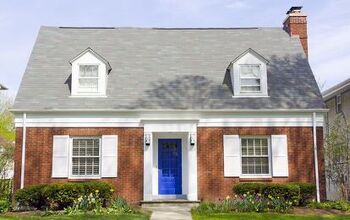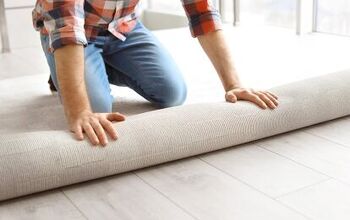Can You Put Vinyl Siding Over Stucco? (Find Out Now!)

Vinyl siding is one of the most popular ways to protect the outside of your home, and rightfully so. It prevents damage from the elements, adds a modern veneer, and also can raise the price of your home. Switching from one home exterior (like stucco) to vinyl seems like a good idea. The question at hand, of course, is if it’s even feasible to put vinyl over stucco in the first place.
It is possible to put vinyl siding over stucco, however, there is a catch. You cannot put it directly over the stucco. To properly place vinyl over stucco, you will need to repair existing damage, install furring strips, and add insulation boards before installing it.
Putting vinyl siding over a stucco exterior is a good way to get away from all the repairs that stucco comes with. Kind of. Either way, it’s time to talk about this potential project.
Do You Need Vinyl Siding Installation or Replacement?
Get free, zero-commitment quotes from pro contractors near you.

Is It Possible To Put Vinyl Siding Over Stucco?
While you can’t install it directly over stucco, you can add your vinyl siding over a stucco wall with the right preparation. As it turns out, prepping this project is as easy as one, two, three…
1. Repair Existing Damage On Your Stucco
Before you can consider adding anything over stucco, you need to patch up your stucco. Otherwise, you will not be able to have your furring strips stick properly. Since your stucco will be acting as a foundation for your vinyl, you have to repair anything that you find in tatters. This includes:
- Cracks and Breaks. A crack in the stucco may seem innocuous, but it’s not. Leaving this unattended is a way to have your exterior walls crumble.
- Mold. Mold can easily destroy vinyl from the inside out. You want to get rid of it before it has the chance to grow on your new wall.
- Water Damage. Water damage, including random moisture, can easily eat away at the stability of your wall.
Once repairs are done, you will need to give your wall a thorough cleaning. After it’s been made clean, it’s time for the next step.
2. Install Furring Strips
Don’t get fooled by the moniker. Furring strips are not furry. They are 2×4 treated wood planks that will act as the places where your vinyl will be installed. Furring strips have to be placed around every door and window. Then, you will also need to install them every 16 inches since vinyl needs to be installed every 16 inches.
Furring strips can be installed via a nail gun (risky) or a concrete bolt. Let’s look at how you can do the latter:
- Predrill holes 8 inches apart in the furring strips.
- Place the furring strips in place against the stucco.
- Use a hammer drill to add concrete bolts through the holes into your stucco.
3. Glue In Your Insulation Board
Now that you have your furring strips in place, it’s time to work in some insulation. This is actually considered to be optional by some, but if you ask us, it’s a must-have. Insulation board makes it easy to keep heat inside your home and also can help you make your place more energy-efficient in the summer.
You will need to select an insulation board that is just as thick (or slightly less thick) than your furring strips. To install it, glue it between the furring strips of your home. If you want to get even more protection against the elements, then you can also wrap your home. This can help lock out moisture and keep your home dry.
4. Install That Vinyl
Once you have created a solid, sturdy foundation for your vinyl siding, it’s time to get to the good part of this project. It’s time to install your vinyl. Here’s what you need to know about DIY installation.
- Nail the vinyl panels to the furring strips, 16 inches apart. Do not use nails in the visible parts of the vinyl, and make sure to add your nails centers in the slots. This will help prevent buckling and warping.
- When you’re hammering things in, avoid getting to drive them straight and level. Putting them on an angle will encourage buckling.
- Don’t hammer things in too tight. Contrary to popular belief, this can actually cause your vinyl to buckle.
- When in doubt, give a professional a call. Installing vinyl is a thing that will make you work up a serious sweat. It’s also one of those things that can go wrong faster than you think. If you are concerned about this, call a professional. It’s better to trust them.
Do You Need Vinyl Siding Installation or Replacement?
Get free, zero-commitment quotes from pro contractors near you.

Related Questions
Why would someone put vinyl siding over stucco?
Stucco is a beautiful material, but it is ridiculously high maintenance. People who have stucco walls often find that they have to get patches because they are frequently prone to damage. Cracks and chips are common too. In some cases, stucco is more prone to mold. This can turn it into a sanitation and allergy issue.Even though there are reasons to want to put vinyl over stucco, the truth is that you should really think about it. Stucco can last for up to 80 years, so it can be durable with the right care.
How can you tell if your stucco was installed improperly?
You should always assume that stucco was installed improperly if you notice an unusually high number of cracks. Improperly applied stucco is also more prone to having water damage and mold. In some cases, stucco that has been exposed to water may even peel off. If you are not sure whether your stucco has been properly installed, give a building inspector a call.
How much does it cost to install vinyl siding over stucco walls?
Doing this is not going to be a cheap endeavor, period. The price to install vinyl siding over stucco walls will range between $4500 to upwards of $15000, depending on the size of the home and your region. On average, doing this to a typical home will cost around $9,288. This is precisely why most people consider it better to keep their stucco instead.
Related Guide

Ossiana Tepfenhart is an expert writer, focusing on interior design and general home tips. Writing is her life, and it's what she does best. Her interests include art and real estate investments.
More by Ossiana Tepfenhart



























